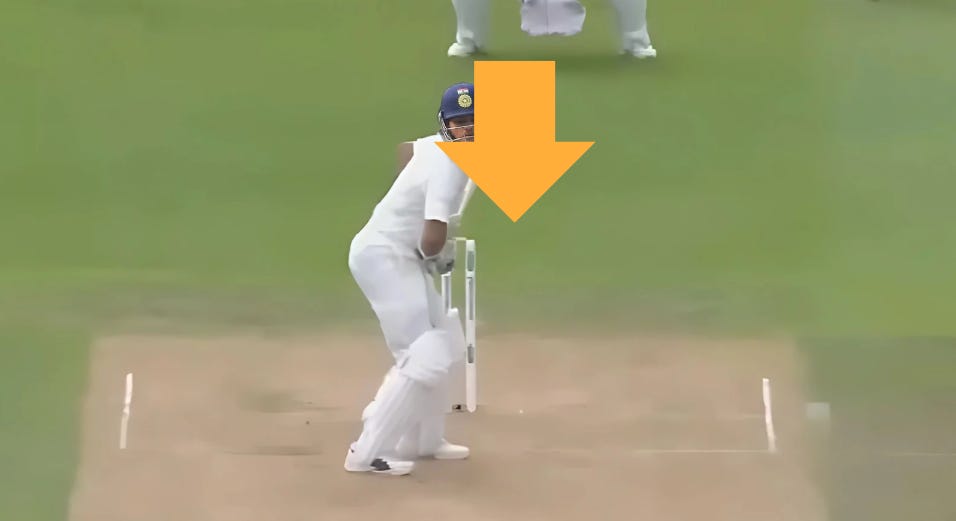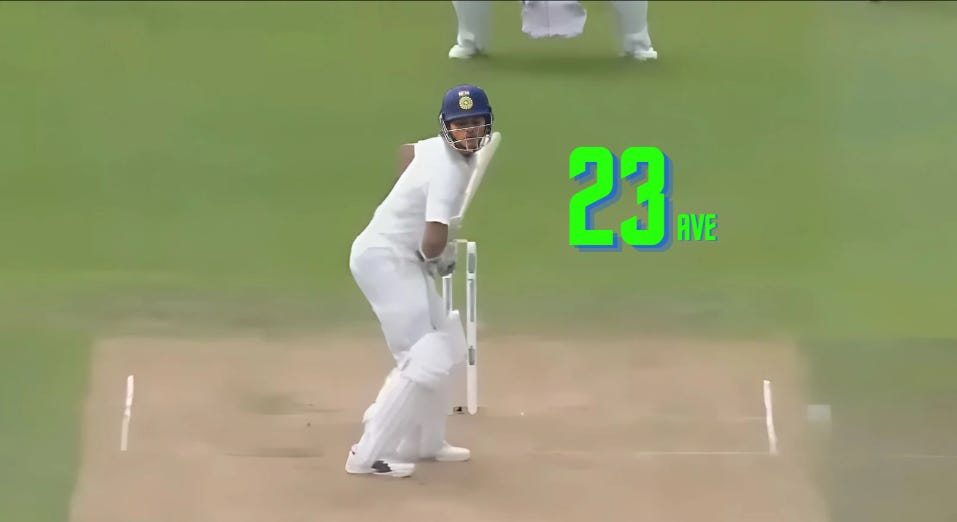Jaiswal and the wide ones
Cricket has undergone a strange transformation, with teams now intentionally bowling short outside the off stump. And it worked.
UK readers can get their copy of the book here:
Yashasvi Jaiswal is playing a drunken forehand into the turf from a horrendous wide and short ball. It isn’t good cricket. From bowler or batter.
But it wasn’t an accident. England and Jaiswal were wrapped up in this epic war, where the bowlers were determined to deliver short and wide, and Jaiswal was throwing everything he had at them.
It is not a normal thing to see in cricket - teams bowling wide and short. Most cut shots now are forced, or played from near the top of off stump. But England were bowling as if it were the early '90s, and Jaiswal was not holding back.
Cricket has undergone a strange transformation, with teams now intentionally bowling short outside the off stump. And it worked.
Bowling is straighter now. There was a time when the corridor of uncertainty - or the Queensland line - ruled cricket thinking. Hang the ball outside offstump, just beyond the eyeline, and wait for the batter to play a shot with the cordon in play. But the wobbleball changed that. The genius of that ball is that every single delivery can bring in LBW, bowled, and caught behind into play - all at once.
So modern bowlers deliver from far wider on the crease, angling the ball back towards off and middle stump. With no outswing bowlers - who have been practically eliminated from Tests - that old line of outside offstump is used a lot less. You can add the extra accuracy of modern pace bowlers as well.
I had a theory: many of the younger batters coming through - Harry Brook, Kamindu Mendis, and Yashasvi Jaiswal - don’t like the ball as wide.
That is wild, because for generations that ball has been filth. But if all the bowlers you face angle the ball to the stumps - especially around the wicket to left-handers - how would you get as good at playing the wide one?
My theory was fairly shaky, though, because even the way to categorise these widths is tough. I don’t really mean that these guys struggle with wide balls. Because that’s the wrong way to look at it. They smash the wide ones, as every top player ever born does.
What I’m talking about is the no man’s land between the corridor and the truly wide ball. It’s not completely wide, but it’s also nowhere near offstump. Cricketers refer to it as hanging the ball wide. And for a long time, it was seen as a way to bowl dry - stemming the runs. But being that modern players can score from any ball, that is why it is no longer used.
For a younger player, that wide-ish middle ground is weird. The ball isn’t always wide enough to free your arms, and traditionally, it’s more a region where you might leave the ball. Players still leave - just not as much - but they don’t do it for hours on end. So this width ends up tempting them to play balls from a good length, or back of a length, well away from their eyes in a way that is often between a straight and horizontal, the dreaded angled blade.
I know you’re thinking some of this is nonsense. Why bowl wide on purpose? But England did. Repeatedly to Jaiswal.
But it gets wilder, because they also went into the pitch.
Short and wide sounds like a terrible plan. And when Jaiswal was off his feet, fully slapping an up-and-over shot or that crazy muscling to Stokes, it looked like a terrible plan.
But it wasn’t the only idea England tried, though. They also decided not to bowl to Jaiswal. In the middle session, they brought the field up for Gill, and moved the fielders back to Jaiswal, in the hope that he would be frustrated with his lack of strike. Whether it played a part in getting them his wicket is hard to say. But there were times in the afternoon where it was like Jaiswal wasn’t even facing any balls.
Some of this had to be Shubman Gill, who seemed to decide to take it very slow. But England were allowing this to happen, even encouraging it. This is a tactic we’ve seen being used before against David Warner and Virender Sehwag. You can’t actually slow them down to frustrate them, so you try to keep them at the wrong end for a while. Make them feel like they’re not adding runs quickly.
But that was a temporary tactic. The one they tried all day was short and wide.
Earlier, England had three slips and two catching backward points. They had deep third and a deep point, but because of the width they offered, Jaiswal still smashed fours. The cut shot was where he scored most of his runs.
He played a staggering amount of them. It’s a shot that is disappearing from the game with bowlers delivering fuller and straighter. But that wasn’t England’s plan. They wanted to bowl these balls to him.
They think this is the way to get him out. And considering they’ve had no luck actually getting him any other way, I suppose they thought this was worth a go. So when Ben Stokes bowled short and wide to him, it looked like a shit ball. A mistake. A bit of luck. But instead, it’s a planned long hop that Jaiswal nicks behind.
After today, when facing pace, one of the best batters in the world - and a potential great - averages 23 when facing the short, wide one. As Neil Manthorp said on commentary, “It’s like he can’t play rubbish”. This line of attack won’t work to all batters, but the ones brought up through the wobbleball era are different, and this is their next challenge. England are never afraid to play ugly, weird cricket. Spamming the ball short and wide is an odd choice, even if you think it might work. And remember that it didn’t for a while, as Jaiswal was on his way to a hundred.
But what this really tells us is how much cricket has changed. Now the planned long hop is a decent option. To rephrase that great cricket truism: planned shit gets wickets.










